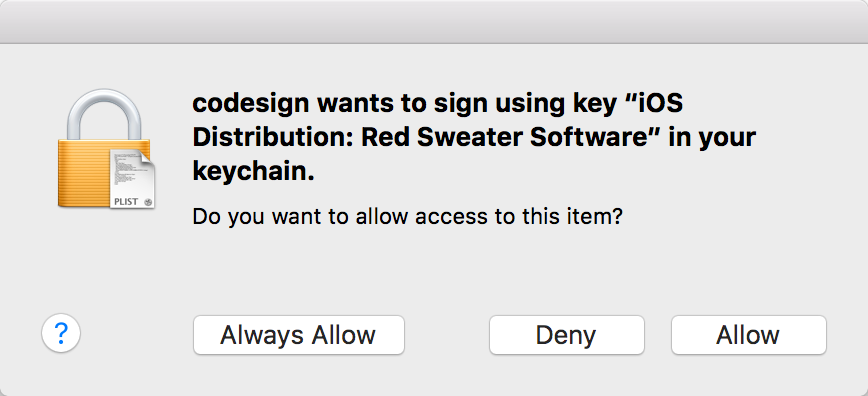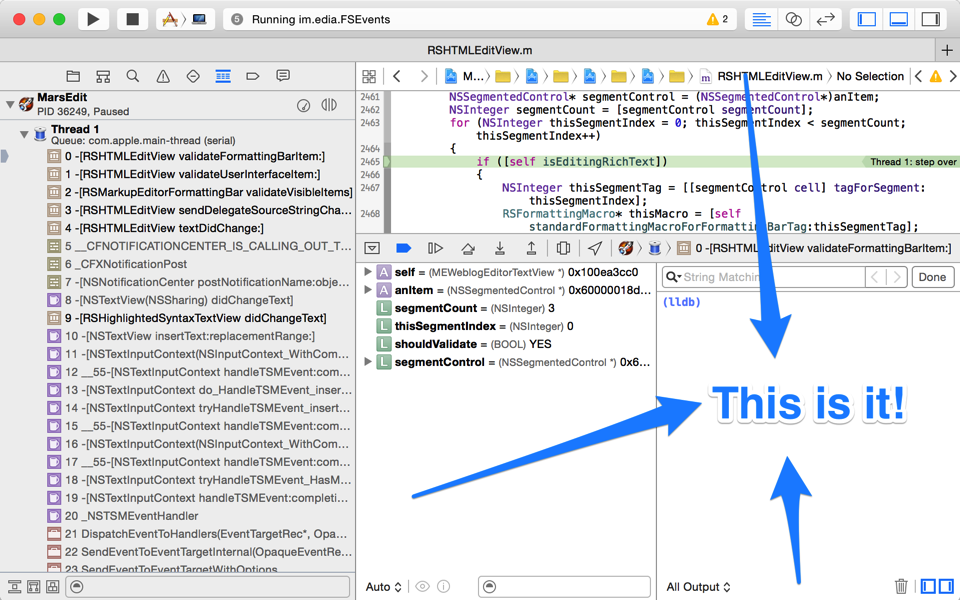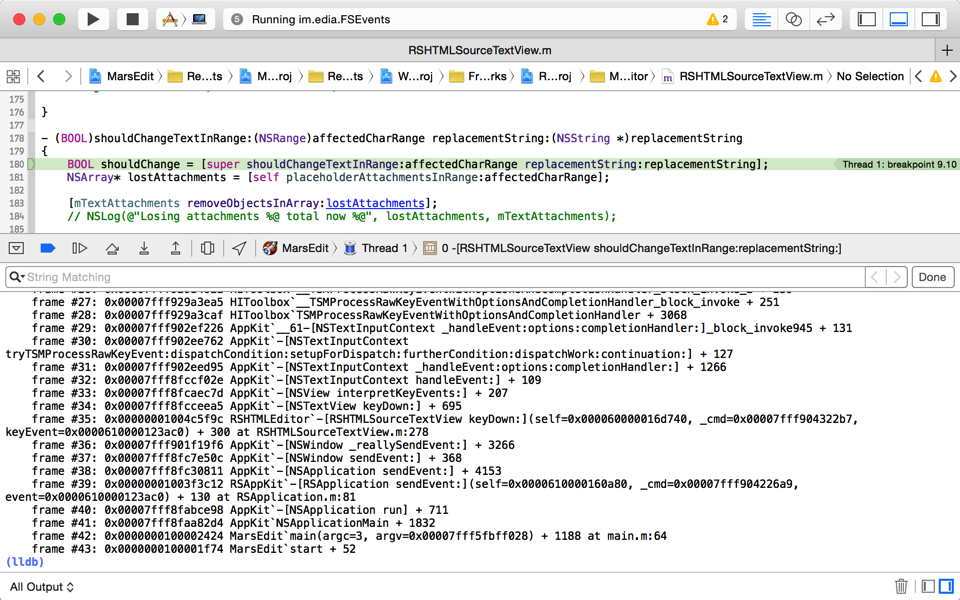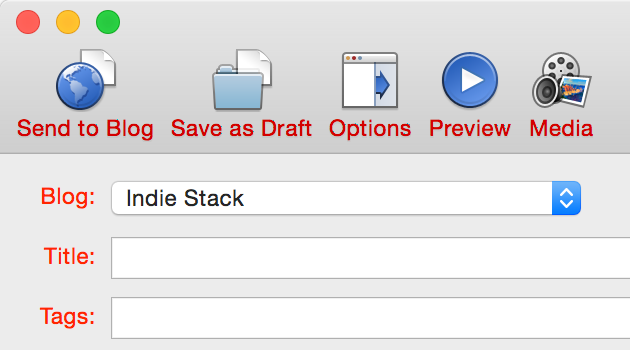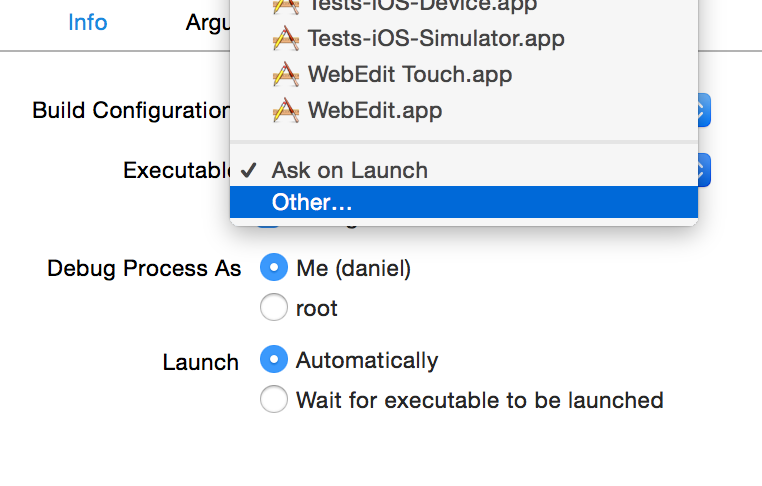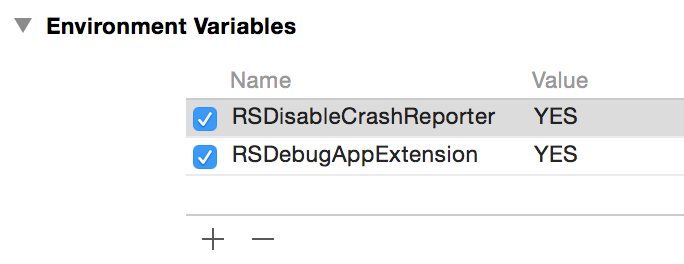I got started with Auto Layout a few years ago, and on the whole I’m very happy with the framework. It can be exceedingly frustrating at times, especially when some nuanced constraint priority or other is imposing a layout that just doesn’t make sense. But I measure its value by the degree to which I shudder in imagining going back to the old springs and struts approach.
Although some interfaces work perfectly with a fixed set of constraints, other interfaces require dynamic manipulation at runtime in order to achieve the desired result. For example, if a change in a preferences panel brings in some new element to the UI, it might make sense to adjust constraints at runtime to accommodate it.
Prior to OS X 10.10 and iOS 8.0, this could be achieved in a general case by removing and adding constraints as needed to the view in question:
- Remove constraints and save them somewhere, e.g. in an array, for later.
- Add or remove elements to the view.
- Add constraints, e.g. by fetching them from a saved array.
It is important to remove constraints and save them before removing an affected element, because removing the element will cause the constraint to be implicitly removed before you can save it.
Starting in OS X 10.10 and iOS 8.0, I was intrigued by the announcement that NSLayoutConstraint now supports a property called “active,” which can be used to, you guessed it, activate or deactivate a constraint. I assumed this would be an answer to my prayers: a constraint could now be left installed on a view for safe-keeping, but its impact on layout would be negated by setting it to be “inactive.” I envisioned setting up competing groups of constraints on a view and simply activating or deactiving them en masse when the need arose.
I assumed wrong.
Looking at the documentation more closely, I see the description of what the method actually does:
Activating or deactivating the constraint calls addConstraint: and removeConstraint: on the view that is the closest common ancestor of the items managed by this constraint. Use this property instead of calling addConstraint: or removeConstraint: directly.
The rub is that an NSLayoutConstraint whose “active” is set to false will be removed from view it is installed on. So if you have any hopes or dreams of reapplying that constraint later, you’ll need to save it somewhere, just as before. If you don’t keep a strong reference to the constraint, it may be deallocated. If you tried to go back and set “active” a constraint that you referenced as a weak IBOutlet, for example, it would be nil by the time you tried to do so.
The OS X 10.10 AppKit Release Notes makes a clearer emphasis on the intended utility of the “active” property:
Under Mac OS X 10.10, it is now possible to directly activate and deactivate NSLayoutConstraint objects, without having to worry about adding them to an appropriate ancestor view. This is accomplished by manipulating NSLayoutConstraint’s new boolean property ‘active’. Class methods are available for operating on multiple constraints simultaneously, which can be much faster. The legacy API on NSView for adding & removing constraints is now deprecated.
So “active” is not a convenience for easily toggling whether an installed layout constraint has an effect or not, but a convenience for the plumbing of installing and removing them. The emphasis on adding and removal API being deprecated especially underscores that.
Having written this all out, it suddenly occurs to me that the “active” flag I was dreaming of is actually sort of available, and has been all along. Because NSLayoutConstraint supports a mutable “priority” property, you can effectively disable it by setting its priority lower than any other constraints that affect the same view. One caveat though is you can’t change a constraint’s priority to or from “required” at runtime, so you have to choose a priority lower than 1000. Something like this should work:
NSLayoutPriority newPriority = activate ? 999 : 1; [dynamicConstraint setPriority:newPriority];
So long as a set of counterpart constraints affecting similar views is always prioritize to the inverse when toggling state, something like this should workâ„¢. Of course, it requires knowing the “active” priority in code. If a given disabled constraint should actually have priority 501 or 250, or whatever, then you’d have to save that priority somewhere. In which case you may as well go back to saving the whole constraint.
